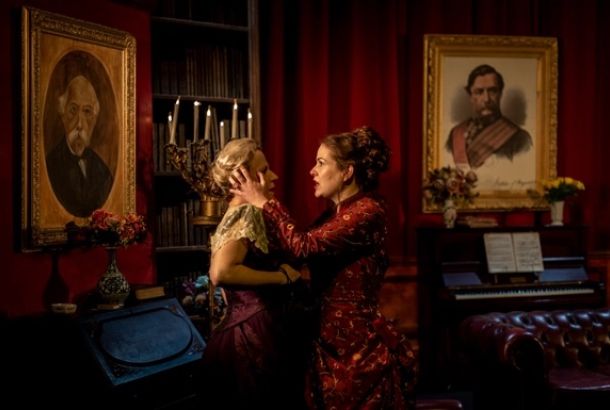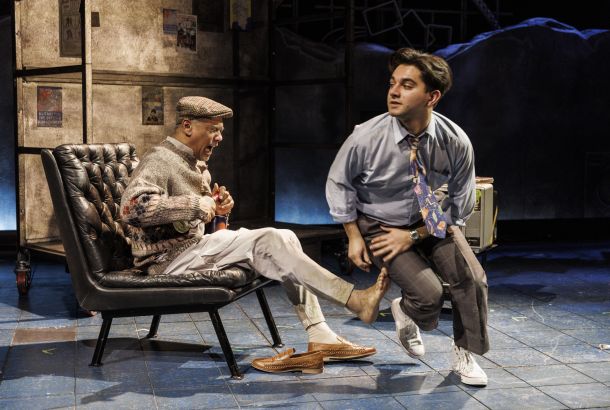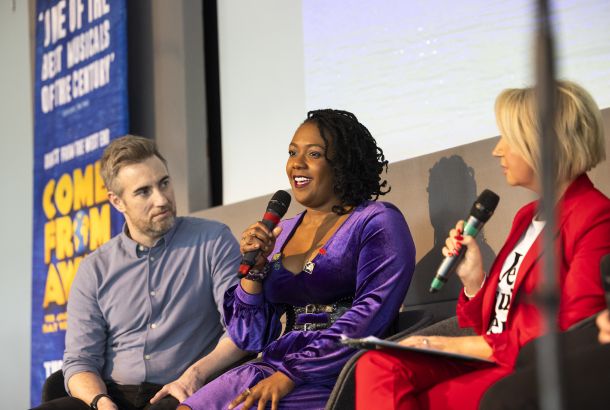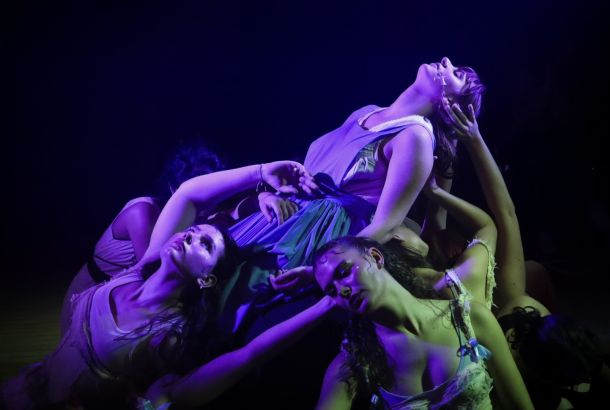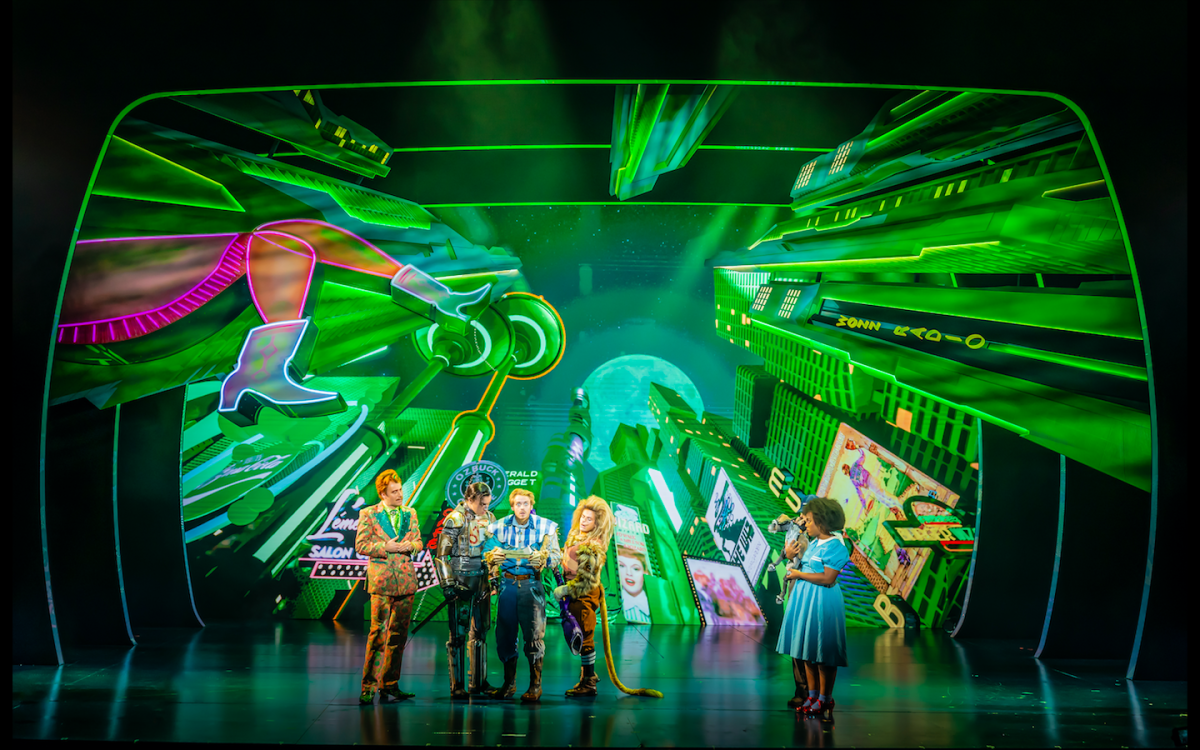
Over a decade after having its world premiere at the London Palladium, The Wizard of Oz has been revived regionally at Curve in Leicester – before transferring to the Palladium over the summer.
The musical is, of course, based on, arguably, the most famous film of all time – itself, based on L. Frank Baum’s children’s book The Wonderful Wizard of Oz – with new music by none other than Andrew Lloyd Webber and Time Rice.
In fact, the original production was billed as Andrew Lloyd Webber’s The Wizard of Oz, but his name has been omitted from the revival, which is directed by esteemed theatre director Nikolai Foster, the Artistic Director of Curve. Curve, itself, is the origin of many huge musicals, such as The Color Purple, which recently embarked on its first ever UK tour.
Whilst the original London Palladium production was a pretty straightforward adaptation of the classic movie, Foster has reimagined Oz into a retro, technicolour, 1950s landscape – contrasted with the dull, dreary, Great Depression-suffering Kansas, which Dorothy longs to escape. The witches ride motorbikes instead of travelling by brooms (or bubbles), with the Wicked Witch of the West carrying a broom-shaped gun that shoots fire. The Wizard’s “face” is no longer a projection but, rather, a terrifying, metallic, robot-like construction. And so on.
At first, I was a little disappointed to be denied the Oz we all know and love, but I was soon enthralled by the reimagined realm. The designs are incredibly inventive, and the attention-to-detail in every single piece of set in every single scene must be applauded. I particularly enjoyed the nod to Julie Garland, with a billboard on a building in the Emerald City featuring an image of the actress who first found fame playing Dorothy in the 1939 film.
Dorothy is played by rising star Georgina Onuorah, who was the alternate for the title character in Andrew Lloyd Webber’s latest (controversial) musical Cinderella. She’s sassier and more strong-willed than previous incarnations of the iconic character, even snapping at her guardians (Aunt Em and Uncle Henry, played by the delightful Jacqui Dubois and Geoffrey Aymer), at one point reminding them that they are not her real parents. It’s great to see a three-dimensional, multifaceted portrayal of a character who, in the past, has been at best naive and at worse vapid.
Onuorah’s rendition of ‘Somewhere Over the Rainbow’, though not as captivating as the original or even previous covers, is charming nonetheless, and the final note allows Onuorah to show off her mighty vocals.
Dorothy’s companions are every bit as whacky and loveable as I hoped. Scarecrow is played by Jonny Fines, who previously starred in the original cast of An Officer and a Gentlemen (another Made at Curve production). Fines embodies a dimwitted, sheltered hillbilly, right down to the southern drawl, and it’s kinda sexy. Fines is naturally funny and wonderfully acrobatic; he excels at playing, possibly, the most popular character from the film.
Tin Man is played by Paul French, who starred in Curve’s revival of Grease, which recently played at the Dominion Theatre in the West End. With his Old Hollywood-like good looks, French is wonderful as the mannequin-like Tin Man. This interpretation of the character is considerably darker than the one in the film. He’s a little scary at first.
French brought a marvellous military machismo to the role. Whilst the character is externally cold and robotic, he has an abundance of emotions and cries on numerous occasions. French succeeds at portraying a soft, sensitive character who is unable to show much emotion because he is literally trapped in a metal shell.
The Cowardly Lion is played by Giovanni Spanó, who starred in the original cast of Bat Out of Hell, which had its world premiere in Manchester, before transferring to the West End, and alongside Onuorah in the original cast of Cinderella. I have previously seen him twice in the latter, as well as Rip It Up The 70s. Some will recognise him from the 15th series of The X Factor, where he placed ninth.
Spanó oozes charisma and charm – even in Cinderella, where he played a background character, I was captivated by him. His lion was especially sassy.
Toto was brought to life by Ben Thompson, an incredible puppeteer who recently starred in the world premiere of 101 Dalmatians. Thompson made Toto incredibly lifelike. It really did feel like there was an actual dog onstage. Toto would run up to new people, walk around, have a nosy, turn his head to Dorothy and whomever she was speaking to, etc. Bringing animals to life onstage is tricky but Thompson always succeeds.
The witches, meanwhile, are played by Christina Bianco (a world-famous impressionist) and Charlotte Jaconelli (Britain’s Got Talent series six runner-up, as part of Jonathan & Charlotte). I recently caught the former in The Rise and Fall of Little Voice. Bianco was fabulous as the girly, adorable, pink-loving Glinda, and Jaconelli offered a fabulous rendition of the iconic Wicked Witch of the West.
I’ve long been a fan of the Wicked Witch’s villain song, ‘Red Shoes Blues’, which was written especially for the musical and originally sang by Hannah Waddingham (who has since found fame in Game of Thrones and Ted Lasso). It’s certainly my favourite song out of all the new songs written for the musical, most of which are pretty forgettable – especially when paired with the forever-iconic, groove-tastic tunes from the movie.
Seeing those iconic songs brought to life onstage was super nostalgic; I could feel myself smiling throughout, and my friend, Leah (a huge fan of the film), kept looking at me with excitement. ‘Munchkindland Sequence’ and ‘The Merry Old Land of Oz’ were the production’s biggest numbers. There was an explosion of colour, both literally and figuratively.
Speaking of the Munchkins, the production has wisely decided not to portray them as little people; many consider the subservient, meek Munchkins to be offensive and dehumanising.
There are many visual allegories relating to commercialism and consumerism, from the power-hungry Wicked Witch of the West, who is literally prepared to kill for a pair of high heels, to cans of sweetcorn growing on stalks.
The Emerald City is superficial, and its denizens shallow, but I do wonder why the creatives opted not to have the characters wear green-tinted spectacles, like they do in the original book (Oz is not actually green; citizens wear green glasses to convince themselves that it is). The movie offers a much more positive portrayal of Oz whilst Wicked (both the novel and the musical) includes that little piece of socio-political commentary.
For Dorothy, Oz is escapism from her boring, working-class life on a farm in Kansas. There is no Great Depression in Oz. Instead, there’s everything in abundance. But Dorothy soon realises that she does not need everything; all she truly needs is her family. Whilst Oz offers a lot, she is unphased, but she does form some wonderful friendships – and her fantastical friends are all based on real-life acquaintances. It is not until Dorothy visits a land where there is everything she could possibly want that she appreciates all she already had.
I love that Dorothy awoke in Kansas still wearing the ruby red slippers. Rather than a mere dream, we are led to believe that Dorothy really was transported to another realm, somewhere over the rainbow…
The Wizard of Oz follows a new trend, in which projections and moving images help create scenery, sometimes in place of huge pieces of set. Even Disney’s Beauty and the Beast combined an abundance of set with projections – which are especially great at helping create a world where magic exists. Whilst some might argue that there is an over-reliance on projections, one cannot argue that Douglas O’Connell’s projection designs are anything but a feast for the eyes, and they succeed in turning Oz into something truly magical and otherworldly.
The Wizard of Oz runs at Curve until 8 January, before transferring to the London Palladium from June 23 to September 3.
